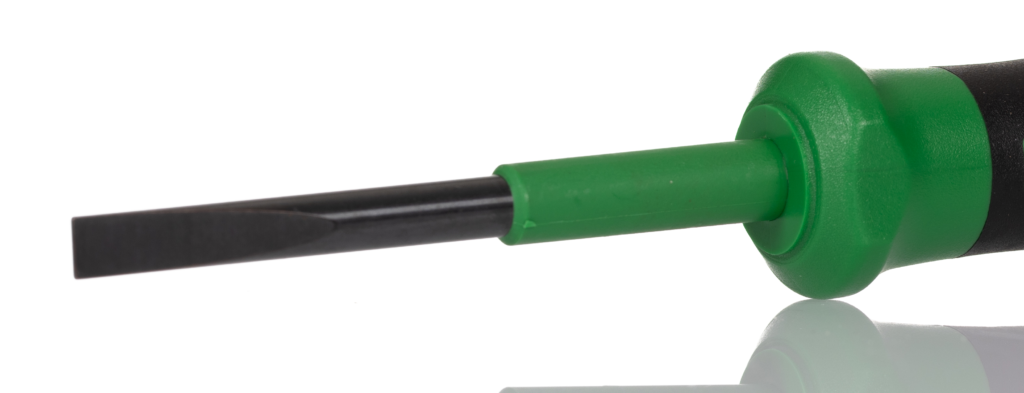Which Wago Screwdriver Fits Your Electrical Tasks?

What Is a Wago Screwdriver and Why Does It Matter?
A Wago Screwdriver is engineered for fast, safe work on spring clamp and screw clamp terminals used across modern electronics and electrical panels. It pairs precision tips with ergonomic grips to reduce slip, protect connectors, and maintain consistent torque.
How Does a Wago Screwdriver Speed Up Work on Cables and Connectors?
Wiring time drops when the tool matches the terminal style and size. With a Wago Screwdriver, the tip geometry engages clamps cleanly, so you seat conductors without frayed strands or nicked insulation.
- Slim shafts reach crowded terminal blocks and miniature connectors
- Hardened tips keep profile accuracy for repetitive wiring tasks
- Low-gloss finish avoids glare under LEDs and task lighting
- Clearly marked sizes help quick selection in tool rolls
What Features Improve Safety, Comfort, and Control?
Electricians and panel builders need control on live-adjacent work. The right Wago Screwdriver provides insulation, traction, and balanced weight to help prevent slips.
- VDE-rated insulation options for safe proximity to switches and fuses
- Anti-roll hex shoulders keep the tool where you place it
- Textured grips stay secure with oils, sweat, or light dust
- Colour cues on caps speed up tip identification in busy tool bags
Which Tip Profiles Fit Your Jobs in Electronics and Panels?
Choosing the correct tip prevents cam-out and damage to terminals. Match tip types to the parts you install, service, or prototype.
Connectors and contactors
- Slotted tips for classic clamp screws on contactors and feed-through connectors
- Pozidriv and Phillips for distribution strips and accessories
- Precision blades sized for spring-clamp access windows on modular terminals
Switches and fuses
- Insulated blades for isolators, push-button switches, and fuse holders
- Stubby drivers for tight enclosures and ceiling roses
- Long reach shafts for deep panels and multi-tier DIN rails
Sensors, controllers, and microcontrollers
- Micro drivers for sensor pigtails and control I/O
- Torque-limited handles help avoid cracking controller terminals
- ESD-safe options for boards with microcontrollers and fine-pitch parts
LEDs, capacitor service, and small electronics
- Narrow blades for LED drivers and compact power supplies
- Precision tips that protect capacitor legs and small terminal screws
- Pocket drivers for on-site adjustments in lighting tracks
Where Does a Wago Screwdriver Fit in Your Workflow?
From first-fix wiring to bench diagnostics, this tool adapts to many tasks. Plan your set around typical cable sizes, terminal densities, and access constraints.
- First fix: fast terminations on junctions, trunking, and cable trays
- Panel build: distribution, signal, and control wiring on DIN rails
- Commissioning: torque checks on relays, PLC cards, and safety modules
- Field service: rapid retightening on sensors, actuators, and drives
What Makes It Reliable for Thermal and Mechanical Stress?
Temperature cycles and vibration test every connection. A Wago Screwdriver maintains tip integrity and handle comfort so you work consistently through shifts.
- Hardened, corrosion-resistant steel resists wear under repetitive load
- Handles tolerate common workshop oils and cleaning agents
- Insulation maintains grip at typical thermal ranges in control rooms
How Do You Choose the Right Set for Cables, Grips, and Space?
Select a compact kit for daily carry and expand as projects grow. Aim for coverage of common terminal screws and clamp windows.
- Include slotted 2.5 mm to 5.5 mm for cable entries and general terminals
- Add Pozidriv and Phillips sizes used in switchgear and accessories
- Keep one long-reach and one stubby driver for space-limited enclosures
- Choose handles with flared guards for confident grips near live-adjacent zones
Care, Durability, and Quick Spec Pointers
Good maintenance extends life and keeps performance predictable. Simple habits protect tips and insulation so results remain repeatable.
- Wipe tips after use to remove fine metal dust from connectors
- Store away from loose screws to avoid micro-chipping at the edges
- Replace a driver if you notice cam-out or rounded slots during work
Quick specification pointers
- Insulation classes for work near switches and fuses
- Shaft lengths for deep cabinets and high-density connectors
- Tip tolerances sized to terminal manufacturer data
- ESD-safe options for electronics benches and rework

How Does It Support Modern Electronics Workflows?
Today’s panels mix power distribution with signal conditioning and embedded control. The right Wago Screwdriver helps you move between tasks without swapping entire tool sets.
- Safe access to terminals around PLC controllers and interface relays
- Fine drivers for trimming sensor terminals and I/O expansion modules
- Stable feel for small screws on microprocessors, development kits, and test rigs
- Consistent performance when adjusting drivers, capacitor terminals, and small relays
Practical Use Cases Across Industries
From building services to machinery, common scenarios benefit from the tool’s precision and feel.
- HVAC panels with thermal sensors, actuators, and fans
- Packaging lines with contactors, safety interlocks, and light curtains
- Lighting control networks with LEDs, drivers, and occupancy sensors
- Test benches that integrate microcontrollers, laptops, and data loggers
Tips for Faster, Cleaner Terminations
Small technique changes add up to real gains in speed and reliability. Use the geometry and feedback of the driver to your advantage.
- Pre-align conductor strands and trim cleanly before insertion
- Seat the tip fully to maintain torque perpendicular to the screw
- Support the cable jacket with one hand to prevent conductor twist
- Apply gentle torque near heatsinks and thermal pads during board service
- Verify pull-out strength on each connector before moving on
Final Thoughts
A Wago Screwdriver brings precision, comfort, and repeatability to daily electrical and electronics work. By pairing correct tips, insulated options, and ergonomic grips, you protect terminals, save time, and produce reliable panels that pass inspection.

